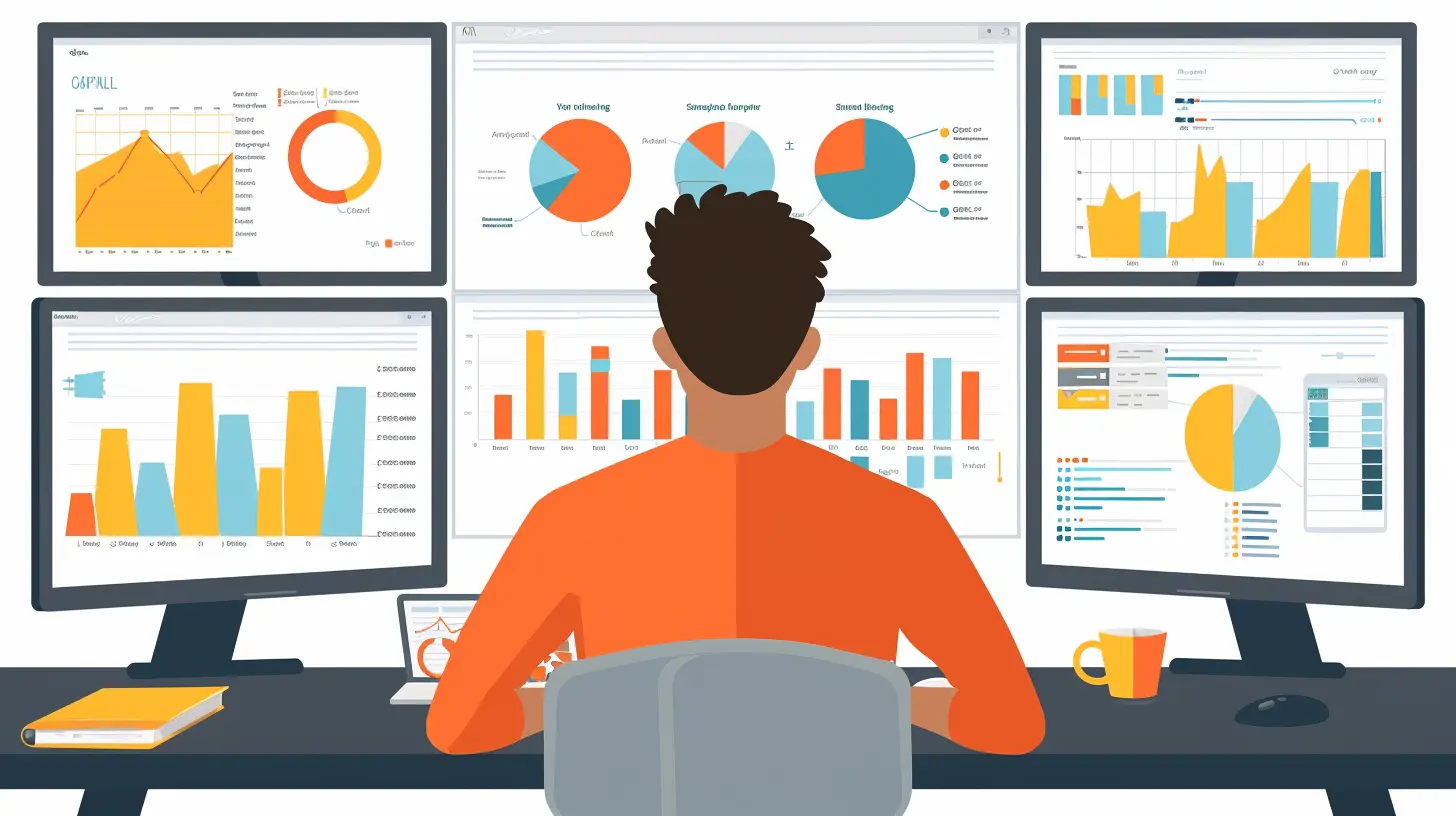Open Source Tools for Data Scientists and Analysts
9 September 2025
Data is the new oil. We’ve all heard that phrase one too many times, right? But unlike oil, data isn’t just lying around waiting to be mined. It needs to be cleaned, processed, and analyzed to derive valuable insights. And that’s where data scientists and analysts come in. But here’s the kicker—most of the best tools for the job don’t cost a dime. Yep, you heard that right. Open-source tools have become the go-to for a lot of professionals in the data science and analytics space. They’re free, powerful, and constantly updated by a community of passionate developers.
In this article, we’ll dive into some of the most popular and effective open-source tools that data scientists and analysts swear by. If you’re ready to supercharge your data game without breaking the bank, keep reading!

What Are Open-Source Tools?
Before we jump headfirst into the good stuff, let’s quickly clarify what open-source tools are. In simple terms, open-source software is software that has its code open to the public. Anyone can use it, modify it, or even contribute to its development. It's like a big community project where everyone pitches in to make the software better.This is a game-changer for data scientists and analysts. Why? Because these tools are not only free, but they’re also highly customizable and constantly evolving. You’re not stuck waiting for some company to release an update. If you have the skills, you can tweak the code to suit your specific needs.
Now that we’ve got that out of the way, let’s get to the fun part—the tools!

1. Python: The Swiss Army Knife of Data Science
You can’t talk about data science without mentioning Python. This programming language is, hands down, one of the most popular tools among data scientists and analysts. Why? Because it’s easy to learn, has a vast library of data science packages, and can handle everything from data cleaning to machine learning.Python is like the Swiss Army knife in your data science toolkit. It does it all! Whether you’re working with structured data, unstructured text, or even images, Python’s got you covered. Libraries like Pandas make data manipulation a breeze, while NumPy is perfect for handling numerical data. And if you’re diving into machine learning, scikit-learn and TensorFlow are your best friends.
Why Python?
- Versatility: It can be used for a wide range of tasks, from data wrangling to machine learning.- Large Community: If you hit a roadblock, chances are someone’s already faced the same problem and found a solution.
- Tons of Libraries: There’s a library for pretty much everything, making Python your all-in-one tool for data science.

2. R: The Statistician’s Best Friend
If Python is the Swiss Army knife, then R is the scalpel—precise and perfect for statistical analysis. R is another popular open-source tool that’s widely used by statisticians and data scientists alike. Where R really shines is in its ability to handle complex statistical operations with ease.R comes with a huge collection of packages designed for everything from data visualization to machine learning. ggplot2, for instance, is one of the most beloved libraries for creating stunning visualizations. And if you’re into statistical modeling, packages like dplyr and caret will make your life so much easier.
Why R?
- Tailored for Statistics: R is specifically designed for statistical analysis.- Visualization: It excels in creating detailed and informative visualizations.
- Community Support: Like Python, R has a massive community that’s constantly adding new packages and resources.

3. Jupyter Notebooks: The Interactive Lab Notebook
Imagine having a notebook where you could write code, perform data analysis, and document your findings all in one place. That’s Jupyter Notebooks in a nutshell. This open-source tool has become a favorite among data scientists because it allows you to combine code, narrative, and visualizations in one interactive environment.Jupyter Notebooks support multiple languages, but it’s most commonly used with Python. Whether you’re experimenting with a new machine-learning model or cleaning a messy dataset, Jupyter allows you to see the results of your code in real-time. Plus, you can easily share your notebooks with colleagues or the wider data science community.
Why Jupyter Notebooks?
- Interactive: You can run your code and see output immediately, making it perfect for experimentation.- Documentation: Easily document your process alongside your code.
- Collaboration: Share your notebooks with others and even allow them to run your code.
4. Apache Spark: Big Data Processing Made Simple
Handling large datasets can be a nightmare, but that’s where Apache Spark comes to the rescue. Spark is an open-source, distributed computing system that’s designed for processing massive amounts of data quickly. It’s particularly popular for big data tasks like ETL (Extract, Transform, Load), machine learning, and graph processing.Unlike traditional data processing tools, Spark can handle both batch and real-time data processing. It’s also highly scalable, which means it can process data across multiple machines, making it perfect for dealing with huge datasets.
Why Apache Spark?
- Speed: It’s designed for fast data processing, even with large datasets.- Real-Time Processing: Unlike traditional tools, Spark can handle real-time data streams.
- Scalability: It can scale across multiple machines to handle big data.
5. KNIME: A Drag-and-Drop Data Science Platform
If writing code isn’t your thing, you’ll love KNIME. It’s an open-source data analytics platform that allows you to build workflows using a drag-and-drop interface. With KNIME, you can perform everything from data cleaning to machine learning without writing a single line of code.KNIME is particularly popular for its wide range of built-in data connectors, which makes it super easy to import data from various sources. It also has a ton of built-in nodes for different tasks, making it highly versatile.
Why KNIME?
- No Coding Required: Perfect for those who prefer a visual, drag-and-drop interface.- Wide Range of Connectors: Easily connect to different data sources.
- Extensible: You can add new nodes and functionalities as needed.
6. TensorFlow: The Heavyweight Champ of Machine Learning
When it comes to machine learning, TensorFlow is the big dog in the yard. Developed by Google, TensorFlow is an open-source machine learning framework that’s designed for building and deploying machine learning models. From simple linear models to state-of-the-art deep learning architectures, TensorFlow can handle it all.TensorFlow is particularly popular for its flexibility and scalability. It’s used by everyone from hobbyists to enterprise-level companies for building machine learning models that can be deployed in production environments.
Why TensorFlow?
- Flexibility: It supports a wide range of machine learning algorithms.- Scalability: TensorFlow can be used on everything from a laptop to a distributed computing cluster.
- Backed by Google: Constantly updated and improved by one of the biggest tech companies.
7. Hadoop: The Workhorse for Big Data Storage
When it comes to storing massive amounts of data, Hadoop is the go-to tool. Hadoop is an open-source framework that allows you to store and process big data across a distributed network of computers. It’s designed for tasks like data storage, data processing, and data analysis.While Hadoop isn’t the fastest tool for real-time data processing (that’s where Spark shines), it’s still one of the most reliable tools for storing large amounts of data in a cost-effective manner. Hadoop is perfect for batch processing jobs and can store both structured and unstructured data.
Why Hadoop?
- Storage: It’s designed for storing massive amounts of data.- Cost-Effective: Since it’s open-source, it’s a much cheaper alternative to proprietary solutions.
- Distributed Processing: Hadoop can process data across multiple machines, making it highly scalable.
8. Tableau Public: Free Data Visualization for Everyone
While not entirely open-source, Tableau Public is a free version of Tableau, one of the most popular data visualization tools. It’s perfect for creating interactive and visually appealing dashboards and data visualizations. You don’t need any coding knowledge to use Tableau; you can simply drag and drop to create your visualizations.Tableau Public is a great option for analysts or data scientists who want to share their work with the public or create visually appealing reports for presentations.
Why Tableau Public?
- User-Friendly: No coding required to create stunning visualizations.- Free: Tableau Public is a free version of the full Tableau software.
- Interactive Dashboards: Create interactive visualizations that can be embedded or shared.
Conclusion: The Power of Open-Source Tools
Data science and analytics are booming fields, and with the right tools in your arsenal, you can tackle even the most complex data challenges. What’s even better? You don’t have to spend a fortune on proprietary software. Open-source tools offer a ton of flexibility, scalability, and power—all for free. Whether you’re just starting in the field or you’re a seasoned pro, these open-source tools can help you get the job done efficiently and effectively.From Python’s versatility to TensorFlow’s machine learning prowess, there’s an open-source tool for every aspect of data science. And the best part is, these tools are constantly evolving, with new features and improvements being added by the community all the time.
So, what are you waiting for? Dive into these tools and see how they can elevate your data science game.
all images in this post were generated using AI tools
Category:
Open SourceAuthor:

Ugo Coleman
Discussion
rate this article
1 comments
Honor McGeehan
Great article! It's inspiring to see the growing emphasis on open source tools in data science and analytics. These resources not only foster collaboration and innovation but also empower individuals to enhance their skills and contribute to impactful projects. Keep up the fantastic work!
September 12, 2025 at 11:18 AM

Ugo Coleman
Thank you for your kind words! I'm glad you found the article inspiring—open source truly is a game changer in data science.


